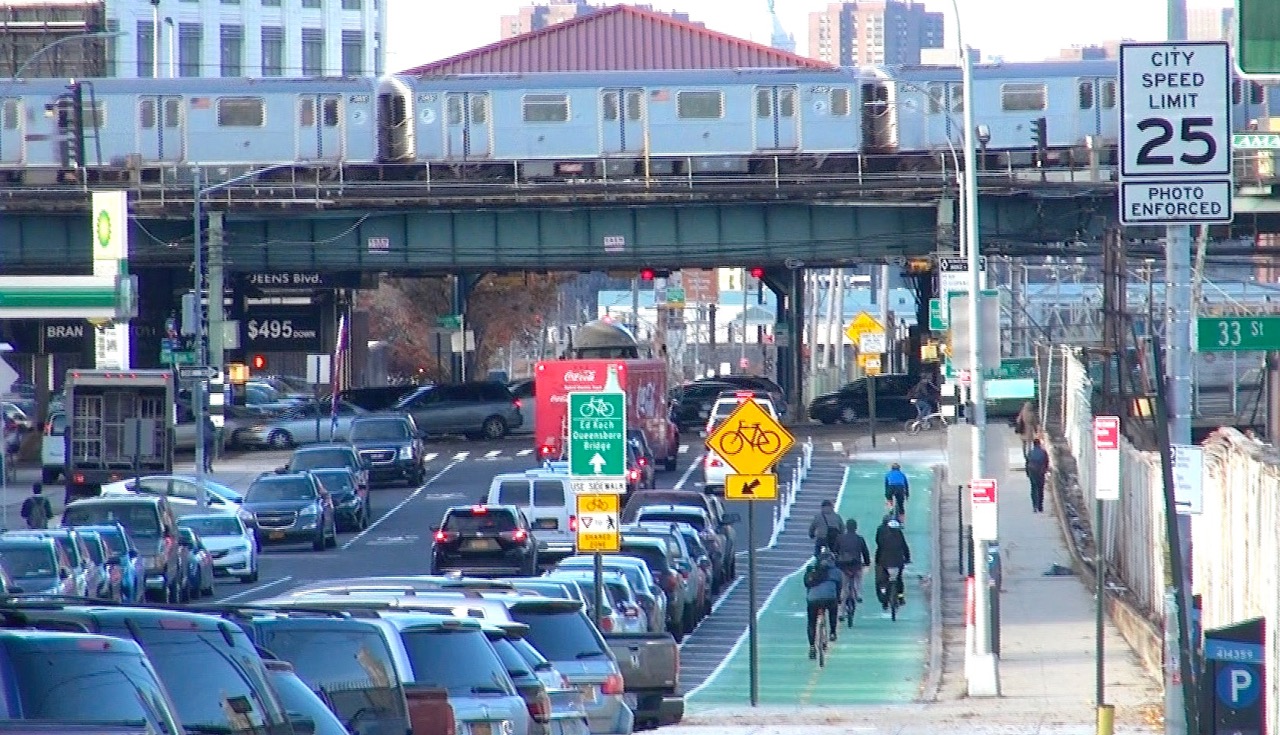City Council Speaker Corey Johnson’s plan to break the car culture — a mix of car-free streets, 50 miles of protected bike lanes per year, more slow "shared" roadways and more dedicated bus lanes that the Chelsea lawmaker unveiled Tuesday — just needs Mayor de Blasio to lead, follow or get out of the way.
Unlike the speaker's call for the city to take over control of the subway and bus system, the comprehensive plan for redesigning city streets can largely be implemented now. If the de Blasio administration wants it, Johnson suggested.
“For the first time, the city will be required to look at our streets in a comprehensive, holistic way, not one neighborhood or street at a time the way we do it now,” said Johnson. “We need to think seriously about how we share space on our streets. Cars cannot continue to rule the road. It is not safe and it is not sustainable.”

De Blasio has long dispensed with the boldest of Johnson's proposals — closing off some streets, including Williamsburg's Bedford Avenue — to cars. Under questioning from Streetsblog, he has repeatedly ignored or glazed over it as unnecessary, though car-free zones have proven successful in Madrid, London, Paris, Oslo and many other world capitals. Meanwhile, Johnson wants parts of the Financial District and Manhattan's Chinatown, plus Eighth Avenue in Sunset Park, to be designed into pedestrian-friendly areas.
Johnson also wants the Department of Transportation to add 50 miles of protected bike lanes a year — up from the mayor’s average of roughly 16 miles per year during the Vision Zero era — and entirely overhaul how transportation officials install them in the face of often-cantankerous locals who oppose protecting cyclists in their communities. Johnson would also tighten the definition of "protected" in protected bike lane so riders have more physical barriers between them and moving cars. The de Blasio administration standard allows for open space to be considered a sufficient barrier.
“When we make our streets safer, we make our streets better. We know this, but we’re moving way too slowly,” said Johnson. “Real protected bike lanes. Not just a green stripe.”
Bike New York Advocacy Director Jon Orcutt said Johnson is the leader bike advocates have been missing.
“The idea of a master plan that encompasses pedestrian improvements and bike lanes could be the kind of leadership framing that we need to take the temperature down on every little bike lane fight in the city,” said Orcutt, a Department of Transportation official during the Bloomberg administration.
All of Johnson's proposals cost money, but beyond that, the Speaker will need the Department of Transportation to agree to more funding — something Transportation Commissioner Polly Trottenberg has previously brushed off. And he'll need buy-in from de Blasio, who has shown increasing indifference towards cyclists, especially delivery cyclists, who are predominantly immigrant men of color.
The Department of Transportation issued the following statement after Johnson's speech: "Pursuing Vision Zero is one of our primary goals, and is guided by data to help save lives across the city. Our street re-design priorities are based on where the most pedestrian fatalities and serious injuries are happening."
The agency has completed scores of street redesigns across the city and overall fatalities on roadways are down substantially. But pedestrian fatalities were up last year, and overall reported crashes have been steady at around 229,000 per year. That's more than 200,000 times per year that an automobile driver hits something — causing more than 65,000 injuries every year.
Corey Johnson 'Let's Go' Transit Plan by Gersh Kuntzman on Scribd






